Birding through the eyes of a wildlife artist
I have been birding for 30 years now and I think I am carefully watching birds all the time I have chance to go out. Positive ID and enjoyment of the view through any optical equipment has been my primary birding philosophy. It’s been even more important for the past 6 years since I photograph birds.
However, I am always thrilled by the even more detailed observation, or better saying, completely different approach of watching birds by most of the wildlife artists. I have a privilege to be in daily contact with Szabolcs Kokay, the multi award winning Hungarian wildlife artist who is a very talented, awarded and young artist.
Today I was talking with Szabi, as we call him, about the process of creating an painting from the ‘mind-kick-off’ to the displayed art.
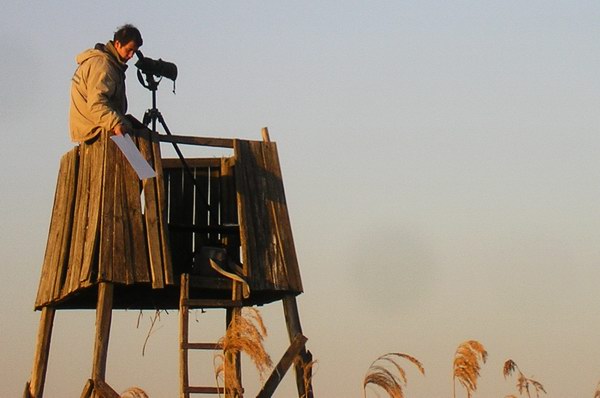 Szabi, I was always wondering whether an artist fully relies on field experiences or a part of the work is a result of a combination of fiction and reality.
Szabi, I was always wondering whether an artist fully relies on field experiences or a part of the work is a result of a combination of fiction and reality.
Large part of my work was based on special, exceptional or just memorable moments captured in the field. Of course this is valid only when I work on my own projects and not for ordered illustrations. Typical example is the roosting Long-eared Owls which I liked to draw and paint.
The composition was so perfect when I found these owls. The vegetation on the left and the position of roosting birds allowed me to make only a slight change in the composition. I think myself to be an open eyed artist with strong birding background.
The other favorite factor which drives my work is the light. When I see a bird in gorgeous lights it immediately grabs my attention and try to fix the moment as is. These Curlews were landing on a pasture when I was there. The golden light was stunning. That was the reality. The Slender-billed Curlew is a fiction in this artwork.
I have several other ideas coming from many totally independent field observations which I’d like to get together on a single painting.
How much does the optical or digital equipments help you in your field work? Have you become faster of more precise?
Since most of my subjects I draw in detail I need references both from my own collection or from various other sources. Today a good optical gear and a digital camera is extremely helpful in recording the moment I witnessed in the field. On the other hand these technics somehow block me progressing on the learning curve. Many great artists, I admire, apparently work without any image references used. Of course when I have to make an illustration for a field guide or a poster I have to be precise and as detailed as possible. In those cases reference images taken by myself or my friends is widely used.
Since we have been working together on the shorebirds book I was always stunned by the way you are commenting and recognizing a tiny feature on a bird and its plumage. You have incredibly focused eyes on details. What helped you in being so eagle-eyed?
Let me explain through an example. In my early times I always painted a singing bird with frozen open bills. When I carefully examined the pose of a singing Reed Warbler I realized that the lower beak is almost never stop moving creating a blurred effect. The human eye doesn’t have such fast shutter speed to freeze these moments. Superficial observer never recognizes it but many keen naturalists going into details when out to nature. Sometimes I must go into depth to draw the bird as they are.
Since I learned this I consciously apply it for my other artworks.
Do video clips more useful than stills?
Normally an image would be more ideal for detailed illustrations but I tend to believe that a short high quality video footage is even better. I can play it in slow motion and select the most perfect pose or composition for my needs. The less is sometimes more, many says. This is really true. I have hundreds of reference images and many times I cannot pick one for further use. Of course for sleeping owls no need to record a video.
What is your future orientation and what is needed to reach the goals?
As I mentioned earlier I’d like to unite myself from using reference images. An artwork should be processed exclusively by using my field sketches. This would affect my style which might be disliked by some but would be an acceptable and pleasant change for others. I don’t tend to illustrate wildlife photo-realistically but by using more improper lines and colors. On the other hand many birders like more realistic artwork than freestyles. I need to fit the needs.
Do you have many ideas in your mind you are keen to go after?
Absolutely. I imagined some nice moments like a Great Bittern in a winter reedbed, a Short-eared Owl sitting in a boggy grassland, or an Eagle Owl in a abandoned quarry and many more. I just need more time to go out sketching.
You are always quite humble despite you have been awarded many times. Do you need to be awarded? Which of these awards is the most memorable?
Recognition is important for me as that drives me to the right direction. Most of us need recognition otherwise enthusiasm will be lost. I am not any different. Of course honest critique is as important as praise.
I have been awarded for some occasions but the most memorable was when I won the ‘Birdwatch Artist of the Year‘ award in 2008. The winning artwork was an unusual composition of juvenile shorebirds. It was a composition what some bird photographers could not understand. I simply did not want to include the whole body of all the birds in the frame but loved to cut some of them, reflecting that they are in continuous motion.
Last year I applied a selection of my best artwork for the Don Eckelberry Scholarship Award run by the ‘Society of Animal Artists‘. This scholarship gave me a chance to spend two beautiful weeks in Trinidad this January, dedicated fully for field work. I think this will greatly affect my career.
Thank you Szabi, and we want you to be back soon with more awesome artwork.
Szabi’s work could be found on his website: www.kokay.hu

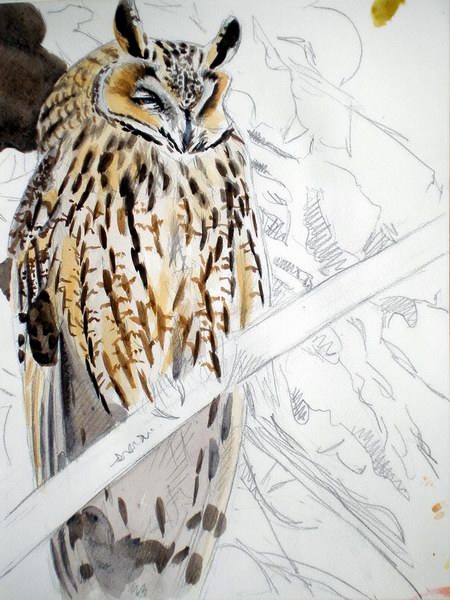
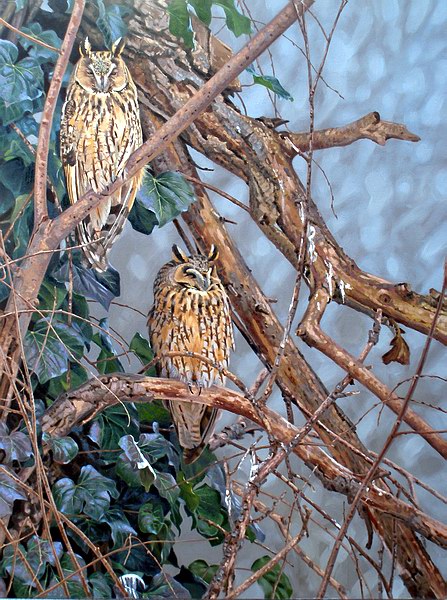
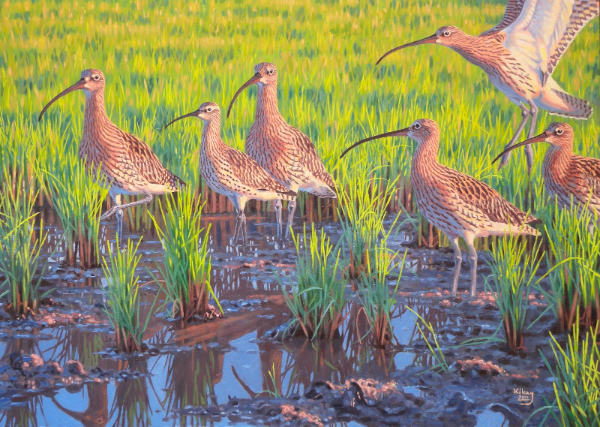
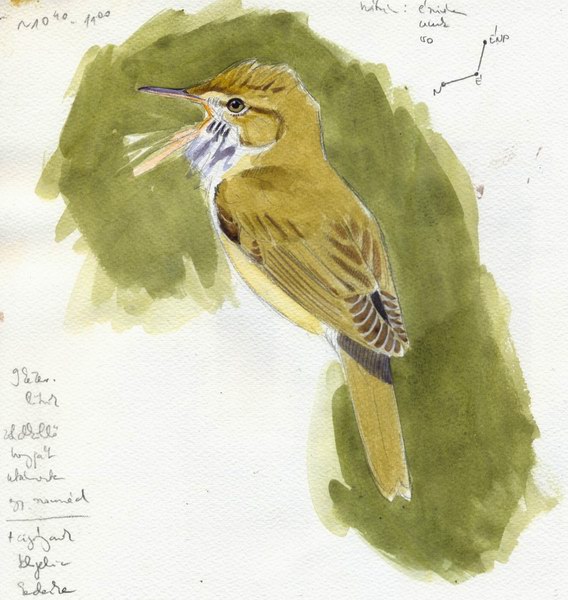
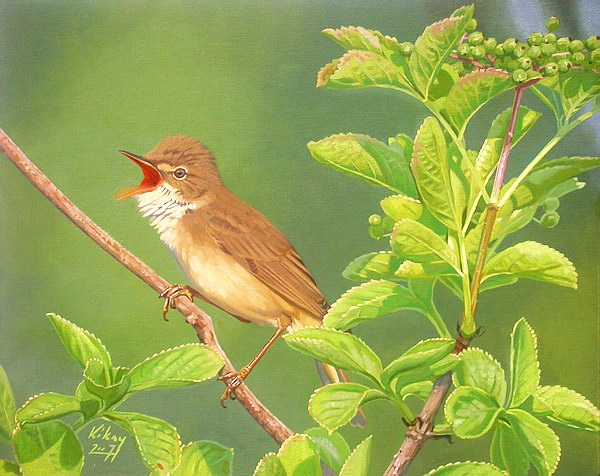
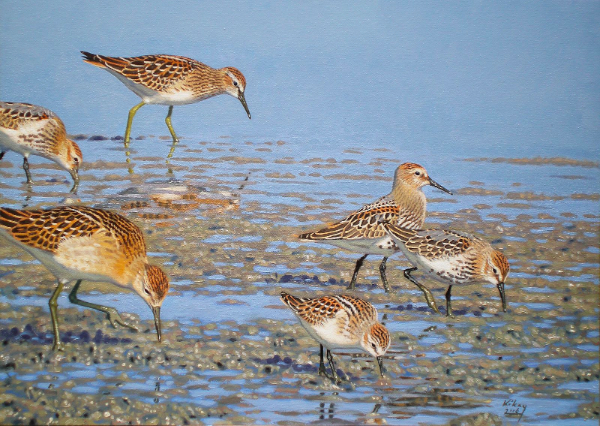
Great post, Gyorgy! Reading about Szabi and looking at his paintings, which are wonderful, especially in capturing the light, inspires me to try my hand at this too – my background is in painting/printmaking but I have ignored this in favor of photography. So back to my roots!